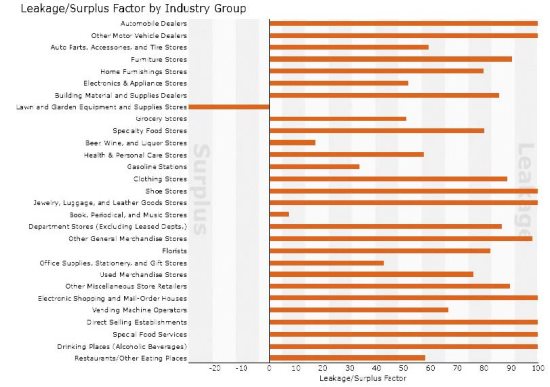
| ||||||
Dr. Michael Wagner, vice president of revitalization programs for the center, presented the the draft findings to the city council's Downtown Subcommittee, for feedback and public comment after meeting with members of the planning staff earlier in the day to discuss the report.
The members of the subcommittee, Mayor Eve Phillips and Council Member Inga Miller, listened to Wagner's hour-long Powerpoint presentation of the report on May 11, and expressed their desire for more information on health and wellness retail and entrepreneurship office opportunities. The final version of the report will be expanded and modified based upon input received from the Orinda community, the council subcommittee and full council, and other stakeholders, and will be presented at the June 20 council meeting.
The center is a unit of the nonprofit National Trust for Historic Preservation that studies the improvement of downtown areas at the request of cities. The Orinda council sought the center's assistance, as well as that of the Urban Land Institute, to identify how to bring change to the city's downtown. Orinda's downtown has remained largely unchanged for more than 30 years, and a call for change has become the major community development issue now that Orinda's road repairs are underway.
The center focuses its efforts on studying the economics of a city's downtown, and on how to implement change through what it calls transformation strategies. Its study seeks both quantitative and qualitative outcomes for questions of how to improve a city's downtown performance.
It developed its findings for Orinda by interviewing members of a wide range of governmental and other community organizations over a period of several months to identify what it calls "key learnings and observations" about the Orinda community. It then matched these up with Orinda's demographic and psychographic characteristics (the latter being a measure of spending preferences based upon the community's specific cultural attitudes) to measure Orinda's retail performance. This analysis produced suggestions for strategies to improve the performance of the downtown economy, essentially by matching the availability of desired business activities to the level of community demand for those activities.
Notably, Wagner highlighted the observation that the approved retail and office development at 25A Orinda Way across from the library and community center "provides a strong example of new infill design and function with downtown." The prospective development "sets the precedent for future downtown design," he said.
Orinda's market characteristics suggest that there are potentially successful downtown retail opportunities, provided the strategies for pursuing them are a good fit, he explained.
The center identified "profound leakage" from Orinda (loss of retail business to other communities like Lafayette) in comparison to potential spending levels because of the absence of certain retail activities, and the city could pursue these to improve its downtown retail performance. Its analysis suggests that improvement could come in the form of more convenience and retail services (restaurants, for example), entrepreneurship facilities (basically, small office spaces), and residential development on the Village side.
On the Crossroads side, health and wellness activities (which include medical offices, spas and beauty shops), and culinary activity (restaurants and retail food stores) could improve performance.
Wagner emphasized that it is important to have a standalone organization or dedicated staff person to manage downtown development, and recommended that the city initially embark on no more than two transformation strategies to be effective.
The full report of the center's findings is available on the city's website, www.cityoforinda.org, by following the link in the Orinda Outlook notice about the report. Public comment on the draft findings will be received up to and including the June 20 city council meeting.
Reach the reporter at:
